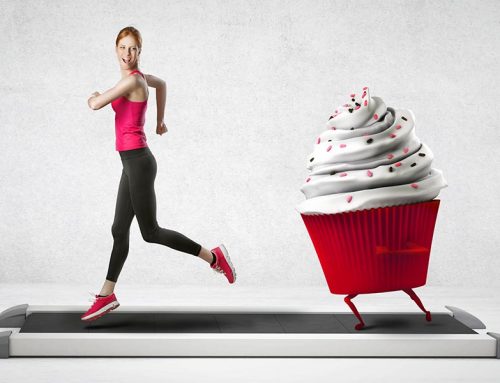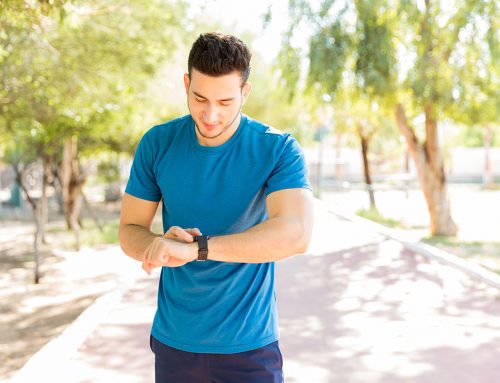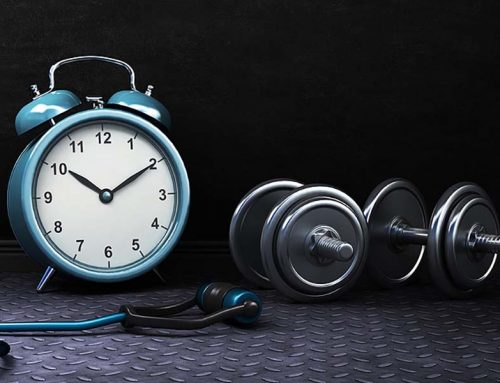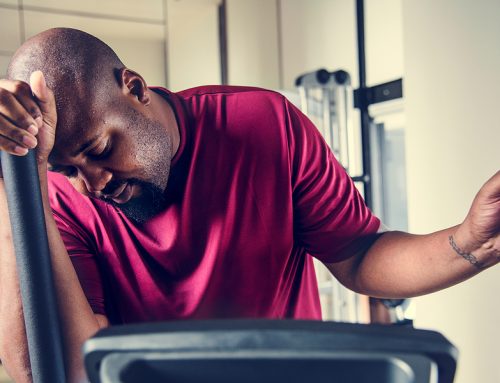In part two of our interview with coach David Grisaffi, you’ll learn how to get rid of a “pooch belly”, how to regain your strength and stomach muscularity after a c-section, how to flatten your abs after menopause, what kinds of cardio are best for flat abs, how to increase your energy almost instantly, the 5 best exercises for a rock hard midsection, plus… advanced ab and core exercises you’ve probably never done before…
Tom Venuto: The last time we did an interview, you explained functional training and what it really means because it’s a buzzword in the training field that’s misunderstood and usually isn’t defined. For those of our readers who didn’t see our previous interview, would you quickly define functional training, and then could you explain “functional progression,” which is something you’ve been writing about more recently.
David: I agree that “functional” has become a common training buzzword and I hear the term used correctly at times and incorrectly at others. Here’s how I define it: Functional training is performing movement patterns which improve balance, stabilization, strength and power. It can also be defined as movement that accelerates, decelerates and stabilizes joints. The important part of functional training is to understand not just what you are doing but why.
We work in three planes of motion, so we should incorporate different exercise patterns to match them. We also must progress from isolation exercises to integrated exercises. For example: Isolation exercises are done to increase strength in a particular muscle or to rehab it after and injury. You might start with leg extensions and leg curls for hypertrophy or to rehab the knee joint after injury or surgery. But once that is accomplished, you must move back into an integrated movement pattern like a squat.
Each type of exercise produces different outcomes. You could say that a bench press is a non functional exercise while a push up is functional. Non functional exercises are usually where you’re lying down, sitting and not required to use your abs or core much. Try doing a push up without using your core, you can’t do it.
I’ve also learned that functional exercises have to include reflex profile, set center of gravity over base of support, use generalized motor programs (if you can squat you can jump), use open and closed chain exercises (push up vs. bench press), and improve biomotor abilities.
Tom Venuto: You mentioned something to me recently about movement development, proprioception and kinesthetic awareness. Care to explain what this jargon means?
David: Well Tom, proprioception and kinesthetic awareness are important concepts leading you to understand how we learn movement skills such as squatting, lunging, bending, pushing, pulling and twisting. All movement and performance comes from one of these actions.
Proprioception is like a person’s sixth sense. It’s your body’s ability to talk to each muscle through the nervous system to produce coordinated action. Kinesthetic awareness is what you do in space. Are they the same? Yes and no. they’re different, but each one works with each other to carry out movement patterns. Movement development is the ability to work on both proprioception and kinesthetic awareness to gain a specific favorable outcome, such as hitting a tennis ball. You need to be able to lunge with flexibility, stability, skill and strength. You also have to be able to twist and perform a push motion to hit the ball.
This isn’t just for athletes, although training these functions will make you fitter, stronger, better conditioned and give you a better body. If you are an athlete, this will help you improve your game to the highest levels. But most trainers don’t know this information.
Effective training programs should be designed to incorporate all of these essentials and provide a full range of conditioning demands from remedial (beginner or rehab) level, very poor movement skills, all the way to advanced conditioning exercises requiring very high levels of skill. All my programs, including my Firm and Flatten Your Abs course, use these principles and take you through the full range of movement development.
Tom Venuto: You wrote a couple of articles recently that got an amazing response. One was about how women can get rid of “pooch belly,” as you called it. You said this is where a woman has a belly that protrudes (“pooches”) outward, even though she may not be overweight or obese. If it’s not just body fat, what causes that and how do you fix it?
David: First and foremost a “pooch belly” is caused by neurological problems. Basically, the “wiring” of your lower abdominal muscles is inhibited, allowing the muscles to relax and bulge out. This can be a result of c-sections, food intolerances, food allergies and much more, not just muscle weakness. So we have two major factors to consider – one diet and the other is exercise.
A good place to start is to clean up the diet for a few weeks. When we consume the same foods, our digestive system can in many cases develop food intolerances. They can wreak havoc on your hormones and immune system, putting a great burden on your entire body. I would advise removing any suspect foods from your diet for at least 2-3 weeks.
The logical place to start is the most common allergenic and intolerance-causing foods. That includes, but is not limited to: corn, corn by-products, wheat, gluten containing products, soy, soybeans, soy milk, peanuts, peanut by-products, shellfish and dairy products – milk, cheese, cream, yogurt, cottage cheese. Then, if need be, work your way through beef, pork, cold cuts, bacon, sausage, butter, ice cream, eggs, mayonnaise, margarine, processed and hydrogenated oils and spreads, chocolate, ketchup, mustard, relish, soy sauce, barbecue sauce, white and brown sugar, honey, ample syrup, corn syrup high fructose core syrup and desserts. Alcohol and caffeine too.
I know that’s a long list, but if you can cut out common allergenic foods and also processed foods and sugars for just 2 weeks, I guarantee you will feel a heck of a lot better. And another benefit – the belly pooch will go away.
Another issue is Visceroptosis, a condition where the internal organs have been compressed and displaced by poor posture and/or the enlarging womb from pregnancy, and this has a direct effect on inner unit muscular dysfunction.
The displacement of internal organs can stretch the attachments which hold the stomach, liver, and kidneys in their proper place in the upper abdomen. As a result, they’re left suspended in a lower position. This creates a tendency for the inhibition of the inner unit musculature. It also affects other structures by way of blocking or squeezing of tubes, ducts, blood vessels, and nerves. This can lead to all kinds of trouble such as indigestion, kidney problems and constipation.
The long and short of all this is that your insides have to be in shape for your outside to be in shape and that requires paying special attention to nutrition, as well as doing exercises that most people are not doing.
Tom Venuto: Another article you wrote that brought in a lot of mail after I published it was about how women can get their abs back in shape after a c-section. Could you summarize your advice on that?
David: When you have a C-section, the abdomen is cut and the muscles are sewn back together. This causes scarring through all levels of the abdominal wall and contributes to the muscle fiber’s inability to glide over the top of each other during contraction. The net result is weakness and lack of stabilization.
This also could happen to the muscles of the pelvic floor aft
er childbirth. When your abdominal wall and inner unit become dysfunctional, then your outer unit muscles which are used for movement (such as your gluteus maximus), become overused and will try to stabilize your pelvis and lower back. Also, when the pelvic floor is inhibited, the Transverse abdominis muscle (TVA) is lengthened and lordosis (lower back curve) begins to increase. This creates a short Psoas muscle and this can inhibit the gluteus muscles.
If this sounds complicated, let me simplify by saying that an exercise program needs to balance muscles that may have become unbalanced. One way to do that is to include a lot of body movement on unstable surfaces such as a swiss ball. Another way is with special exercises for the inner unit. I use a lot of both in Firm and Flatten Your Abs.
Tom Venuto: do you have any other advice for women, especially post menopausal women who seem to struggle with the abdominal area?
With menopause, it can be a frustrating time, as you start to see that “middle age spread.” You ask yourself what’s going on, because it seems you’re not doing anything different than when you were younger. It seems like you can’t lose weight as easily as before. Your body shape changes even if the number on the scale stays the same. Exactly! Times are changing and your habits and behaviors need to change with them.
But if there are women reading this who think there’s no way to get over that mountain and feel good, well, I have some good news. Menopause simply means the time of life when you are done having your monthly cycle. That is ALL it means. At the turn of the last century we didn’t live as long as we do now- 40 years compared to 80 years – so if you think about it, many women never got to menopause. Now, midlife is a time you can reinvent yourself, discover your purpose, find your true source of energy and use it in a different more positive way for the rest of your life.
I know a lot of women want to lose stomach fat, and I can help with that, but at this time in your life, I recommend focusing on your health – especially heart health – as much as anything else. Get you blood work done and know your numbers. And remember, cholesterol does not cause heart disease. 50% of women who have heart problems have normal cholesterol. If you are thinking of taking a Statin drug for it, get a second opinion. They cause a dramatic decrease in Co Enzyme Q 10 or CoQ10. This naturally occurring antioxidant is needed for cellular energy in the heart and brain.
We are a “one pill fixes you” society and that was the way doctors used to address menopause. This has changed. Exercise is a great way to deal with menopause. It increases the blood flow in and around the heart. Walk if you can’t do anything else. A famous cardiologist who invented the EMG machine stated “ I have 2 doctors – my left and right leg.” So think about that.
This is mightily important at a time in your life when you are faced with metabolic shifts. It all starts years before it shows up, with the inability to control blood sugar. It reaches critical mass at middle age for men and women. When blood sugar is too high, it oxidizes in your blood vessels. With high blood sugar, increased insulin is released to normalize your blood sugar and that takes the extra sugar to FAT STORES.
Did you know that almost all chronic diseases are associated with insulin dysfunction and glycemic stress? The cluster of symptoms is known as Syndrome X and on your road to syndrome X you may also experience problems with nighttime eating, insomnia, fluid retention, aches and pains, PMS, and much more. When you have syndrome X, your risk for heart disease, diabetes, breast cancer, hypertension obesity, high cholesterol, and lack of ovulation all go up quickly.
Is it reversible? The answer is YES. Eat 3 healthy meals per day with large amounts of vegetables and fruit with adequate protein. Avoid msg, alcohol and coffee. Eliminate the refined carbs as these cause inflammation to your body. When you body is always fighting inflammation, it rarely has time to work on fat loss. Excess body fat also produces it own chemicals that contribute to heart disease.
Balancing your hormones in middle age is easier than you think. Most problems can be managed with proper diet and exercise.
Tom Venuto: You mentioned walking. Lately, high intensity interval training has continued to remain popular and some fitness pros actually have bad things to say about lower intensity forms of cardio. Correct me if I’m mistaken, but you’re a fan of walking as exercise. Does this mean you’re not on the bandwagon that the only kind of cardio worth doing is HIIT? What do you like about walking and how would you recommend using it? When and for whom would you recommend HIIT or more intense forms of cardio?
David: Good question. I love walking for its simplicity. Personally, I walk almost every day for half an hour, listening to my ipod. It’s relaxing for me. It helps me clear my mind if that’s what I need or stimulate my subconscious and creative thinking. I recommend walking for anyone – beginner or advanced.
I also use more intense workouts. Interval training is major part of my weekly schedule as well. If you want to lose weight and time is limited, interval training is your answer. The benefits of interval training are numerous and there are a lot of studies backing them up. You not only burn more calories in a shorter period of time, you also get the benefit of sending special messengers to your fat cells to cause more fat to be released. It’s great for rapid physical conditioning too.
If you’re not familiar with intervals, it’s when you step up your exercise intensity in short bursts or bouts, then return to a slow or moderate pace, then repeat. You can use intervals for almost any type of cardiovascular exercise and even walking. It doesn’t always have to be all out. For example, after a few minutes of walking at your normal pace, you can increase your speed for 30-60 seconds then return to your normal speed. You continue this throughout your 30 minute walk.
When deciding on a workout, remember to take into account your age, health conditions and current fitness level and adjust the workout for you rather than copy someone else. Again, interval training doesn’t always have to be all-out. Also, always match your intensity to your level of energy. If you feel good, go for it and push yourself with higher intensity that day.
Tom Venuto: In the martial arts and other Eastern philosophies, there’s a lot of talk about proper breathing and its role in good health, but what’s the significance of breathing during exercise? I was also curious, on a somewhat related note, what do you think of the abdominal vacuum exercise? A lot of the old time strongmen and bodybuilders used to do those and there are a handful of gurus online that recommend them today as a sort of “lost secret” rediscovered.
David: One thing you have to remember is that regardless of the type of exercise you choose, if the intensity is high, that kind of training is a form of stress. With proper nutrition, water intake, sleep and rest, you can recover properly from intense training.
If your training is too intense without proper recovery, your hormonal and nervous systems will produce stress and activate the fight or flight sympathetic nervous system. Recovery is incomplete and even losing body-fat becomes extremely difficult.
To help improve recovery, it helps to include exercises that have a calming effect. This is where breathing comes in.
I really like the abdominal vacuum exercise, which is what world-renowned bodybuilding trainer Vince Gironda called it. Ian King, a popular strength coach from Australian calls it the “Thin Tummy.” As a CHEK Institute gra
duate, I was taught to call it Transverse Tummy Tuck.
The word transverse is important to know. This describes the deepest muscle in the abdominal wall. If it doesn’t work properly, you have a dysfunctional core. This muscle works as your own personal weight belt by keeping your belly flat. When working correctly, it not only keeps your belly flat but also improves posture, reduces back pain and increases lower abdominal tone.
I recommend this exercise daily with my clients as a stepping stone to more advanced ab training. It’s a breathing exercise and is actually mentally relaxing, but you also get the benefit of improving your mind to muscle connection.
The vacuum has a few variations but the 4-Point Transversus Abdominis Tuck is a breathing exercise I like to do it. This exercise is for isolating the transverse abdominis, for correcting “pooch belly,” and reconnecting with the nervous system. It’s particularly valuable for pre-surgery preparation and post-surgery rehabilitation. In surgical procedures such as C-section and hernia, the muscles, nerves, and tissues are cut, causing a loss of neurological impulse (your brain tries to call your muscles to wake them up, but the muscles don’t answer!)
Lack of neural drive to the core muscles is one reason for the belly hanging out. Certain exercises can help reconnect the nervous and muscular systems so your “pooch belly” gets the message from the brain loud and clear and pulls those muscles in.
Here’s how you do it:
Get down on all fours as though you were going to crawl. Place your hands directly underneath your shoulders and your knees directly beneath your hips.
2. Inhale and let the transverse abdominis hang out toward the floor.
2. Exhale, drawing the belly button in toward the spine. Avoid any spinal movement during this exercise such as contracting the glutes, hamstrings, or external rotators.
Perform this exercise on a 10 second hold in and 10 second release out. Repeat this combination for a total of 10 times. Or a total of 3 minutes. You can perform this exercise up to 3 times per day for 3-4 weeks and you will see fantastic results.
This is one of the exercise I include in Firm and Flatten Your abs at www.flattenyourabs.net
Tom Venuto: Energy seems to be something that most people would like more of. Usually when we talk about energy, we think about proper nutrition, sleep and restoration. But what about exercise? Why do certain types of training systems seem to energize you while others seem to zap you and leave you tired and beat up? Do you think it’s really true that training can give you more energy?
David: People usually think of exercise as tiring or using up energy, but I agree that certain exercises performed in a certain way improve your energy and vitality. Some of these systems are based in eastern traditions. Such examples are Chi Gong, Yoga, Meditation and martial arts. These practices often use a form of mental quietness, a spiritual philosophy and detoxification of the system to achieve a more balanced body.
Tom Venuto: Speaking of fighting arts, you have an article on your site about how you train professional boxers. Is the way you train athletes very different than the way you train recreational exercisers?
David: Tom, I would say it depends on the person’s goals, and their current condition and coordination. I have trained my regular clients with some of the same types of boxing workouts I give my competitive fighters. The ones who can handle it really love it. But remember, this is not done all the time as it can be very hard on your entire body. You have to be eating just right, sleeping just right and supplementing just right to fully recover from intense types of training. If I ramp it up on someone and they don’t understand the rest of the equation, they’ll fall prey to overtraining and hate the way it feels.
Tom Venuto: What do you think are the 5 best abs and core exercises? If you have pictures too, that would be great – I’ll post them on my site with this interview.
David : The best exercises are the ones best suited to the person who is doing them. I can’t give you a generic answer because it really depends on the person’s physical condition. If a person has been physically declining, meaning they are moving backwards due to an injury or other limiting factors, I would give one group of 5 exercises, and if someone is physically ascending toward peak condition, I would be giving them a different 5.
With that said, I do have my favorites, because they involve the whole body: I really like one arm inverted rows.
I love Side Bridges with Arm Leg Rotation – it’s a great bodyweight exercise and more engaging than the usual side bridge.
Also the kneeling Swiss Ball Chek Press.
And any cable chopping exercises such as woodchopper and reverse wood chopper. These can be done with varying movement speeds and one or two feet to add another dimension.
Single leg pike is another I like to do…
All of these are advanced exercises that would require you to ascend through the lower levels before engaging. Some of these are in my Firm and Flatten Your Abs e-book and that book also includes the beginner level exercises as well. The rest will be included in an upcoming new workout book with more advanced movements.
Tom Venuto: This is awesome stuff – I like inverted rows myself, but never tried them one arm at a time. I usually do them in the power rack like you have in the picture, but I pull off the bar. Your way looks tough! I guess you could do that with a TRX system too, right? Before we wrap it up do you have any other advanced movements or routines for abs and core exercises – something for an experienced trainee who wants a real challenge?
David: Well that one arm inverted row is a great one – very neurologically challenging. It’s is very advanced and difficult exercise and it works your entire body. You’ll be sweating fast due to the nervous energy required to complete this exercise. In case you can’t tell from the picture, yes, you can attach a suspension strap to a secure anchor point and adjust it to an appropriate height. The lower the handle, and therefore the more horizontal your body, the harder the exercise will be. You could do this off a barbell in the power rack too, like you’d do a regular inverted row.
For a good advanced routine, I do that one in a circuit with with (Fitter) Push Up Frontals (side to side), two armed dumbbell overhead squats with pause and Cable Horizontal Chop Static Lunge Combo and you’re spent.
Here’s the Dumbbell Overhead Squat:
Here’s the fitter push up side to sides:
Tom Venuto: Well, thanks a million David. It’s always a pleasure talking to you. I gotta hand it to you, I don’t think we’ve ever talked about abs and core training where I didn’t walk away seeing a f
ew new exercise variations I’d never seen before. Thanks for giving away so much great info – it’s very generous of you. If our readers want to hear more about your abs and core training programs where should they go?
David: My pleasure Tom. It is always fun to talk about fitness, nutrition and core training with you. For more info on my exercises and training programs you can go to www.FlattenYourAbs.Net to find our more about the flatten your abs program. Thanks again tom.
About David Grisaffi:

© Copyright David Grisaffi and Personal Fitness Development – Reprinted with permission
No reproduction of this article is permitted without the express written consent of the author.
Burn The Fat Blog has an affiliate relationship with some of the products and services discussed on this website and may be compensated from purchases. Burn the Fat Blog has thoroughly reviewed the products it links to, recommends or endorses, however you should always perform your own due diligence before buying goods or services from any 3rd party via the internet or offline.















Thanks for the ab exercises. i have a long list and do many of each every day but im fairly certain i have hit a platueu point and needed something challenging. i have been tryin to get a six pack for almost two years now and i have strong abs but not showing. now i know some of the other causes. – thanks for pointing me in the right direction
I am learning so much from your newsletter, Tom. This interview with Coach Grisaffi contains a lot of great information I can use. I’ve been taking statin drugs for years and ran out of C0Q10 some time ago, not realizing the impact this would have on my health. Now I am going to get off the statin and get some C0Q10, as well as slowly increase my workouts. I’m 65 years old and had a triple bypass in Dec 2005, so this will be a challenge. Also, whenever I need something like C0Q10, I have to have my sister in Missouri send it to me as I retired to Morocco in January 2008 and can’t find anything here! But, I’m determined! Thanks!
Great articles! I am finding that low intensity walking is working better for me when it comes to fat loss. It seems to put less stress on my body than the high intensity workouts, require less recovery time and doesn’t stimulate my appetite as much. I have a lot of time for fat loss and am trying to burn fat slowly (targeting 0.5 lb fat loss per week) and maintain lean mass which so far has been working well. I’m assuming the one-arm inverted rows can be done on the straps (I think they’re called TRX?) at the gym? I’m not strong enough yet for one-arm rows but have been using the straps at the gym for two-armed rows and I love them!
I’ve just started working in some HIIT to my repertoire — as well as increasing the amount of weightlifting I’m doing. Since I only have a fixed amount of time to work out, I find that having a day or two a week where I really put in a hard workout (back and forth between treadmill and bike, most of the time; 2 mins and 1 min) kicks things up.The addition of some more core work can only help and I’m going to try some of these suggestions. Changing the core work I was doing to something a little more strenuous has paid off for me. My waist size has dropped 4″ in the past six weeks!Thanks for all the info. It is very helpful.
Thank you so much for addressing the specific situations of older women serious about fitness. I run, weight train, swim, do aerobic and anaerobic muscle endurance routines from a popular web based program and, because I did not begin this until my 60thd birthday, I have been disappointed by the fact that most programs do not address relatively recent fitness lifestyles of older folks who are determined to make improvements.Again, thank you.
Thank you for addressing the “POOCH” I am going to start with the vacuums as soon as possible. I also have started with the HIIT.Thank you,Kathy B
I love all your information..It is very educating…thank you!
Great information regarding the emphasis needed for premenopausal or menopausal women siting the importance of focusing on the whole body and limiting risk factors overall rather than focus on one particular area.
Good stuff. Thanks for sharing these interviews. I enjoy your site. Good information and common sense without all the hype.
I really like the info here. I had to have my whole abdominal wall fixed as I had 2 massive herina’s from haveing 9 lb babies. My diaphram area kept pooching more and more until I went to the Dr and he couldn’t believe the size of the hernia there and behind my belly button. My stomache is still kind of numb and hard, but my whole digestive system is working 100% better.